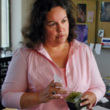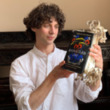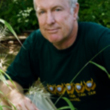Finding the mother tree: discovering the wisdom of the forest
Description
More Details
9780593410967
052565609
9780525656104
Excerpt
Similar Titles From NoveList
Similar Authors From NoveList
Published Reviews
Booklist Review
Forest ecologist Simard has been studying intricate, mutually sustaining forms of communication and interconnectivity among trees and fungi for decades, initially as a determined and controversial researcher for the Canadian Forest Service, then as a professor who attained TED Talk fame. In her galvanizing first book, she interleaves her family's history as British Columbia homesteaders and loggers with detailed accounts of her innovative and exacting fieldwork and paradigm-altering discoveries. As Simard elucidates her revolutionary experiments, replete with gorgeous descriptions and moments of fear and wonder, a vision of the forest as an "intelligent system, perceptive and responsive," comes into focus, leading to her revelation of how "mother trees" not only nourish and protect seedlings but also "continuously gauge, adjust, and regulate" their support of the entire forest through a finely calibrated web that mirrors our own neural network and cardiovascular system. Simard's findings make the case for saving old-growth forests as climate change and mountain-pine-beetle infestations kill millions of trees. Herself a mother, Simard's dedication to unveiling nature's complexity is rendered poignant in light of her candidly shared struggles against misogyny and cancer. Having proven scientifically what Indigenous cultures have always known about nature's glorious mutualism, Simard calls for the protection of all ecosystems so that all of life will endure. A masterwork of planetary significance.
Publisher's Weekly Review
Forest ecology professor Simard artfully blends science with memoir in her eye-opening debut on the "startling secrets" of trees. Simard explains that trees are "linked by a system of underground channels" that create a "forest society," and among the mind-blowing discoveries she's made is that older trees are able to identify which saplings they're related to, and that they nurture younger trees. These conclusions stem from her work on "mycorrhizal networks," or fungal threads that grow between cells of plant roots, and a "Mother Tree" that uses such a system to transfer nutrients to kin saplings. These revelations, she argues, make for more than just a series of oddities: it should be motivation to reform forest management in a way that benefits humans as well as trees. She explains the resistance her theories encountered after her initial article on tree intelligence made her a minor scientific celebrity, and grounds her own journey of scientific discovery in seminal life events: after discovering in the lab that birch and fir trees communicate, for example, she received a call that a sibling she'd been estranged from had died: "The funeral was held in agonizing cold. The aspens were bare, the firs nestled beneath their dendritic crowns drooping in snow." As moving as it is educational, this groundbreaking work entrances. (May)
Library Journal Review
Simard (forest ecology, Univ. of British Columbia) tells the story of her pioneering research on trees' use of fungal networks to nourish and communicate with one other: the so-called "wood-wide web." There should be strong interest in Simard's memoir, as she is something of a star among tree lovers and was the inspiration for the character Patricia Westerford in Richard Powers's Pulitzer Prize-winner The Overstory. Here, readers follow along as Simard's research develops, and as she discovers that plant communities are driven by not only competition but cooperation as well: different tree species share resources with trees in need, "mother" trees send carbon to seedlings, and dying trees donate nutrients to neighbors. Simard celebrates pivotal moments, navigates personal crises, and admits to professional doubts; all told in a smoothly written narrative. The risks and rigors of her field work--conducting experiments with radioactive materials, navigating salmon runs while being aware of wild animals within and around the forest--are keenly felt, as are the challenges facing a reticent woman working for change in the way we manage forests. There are photographs of trees throughout. VERDICT Simard's science fascinates, and so too does her life. This is an engaging memoir of scientific discovery.--Robert Eagan, Windsor P.L., Ont.
Kirkus Book Review
One of the world's leading forest ecologists recounts her lifelong experimentation with tree-to-tree communication. In this memoir/scientific exploration, Simard tells the fascinating story that led Richard Powers to base a character on her in his Pulitzer Prize--winning novel The Overstory. Simard focuses on her work probing the nature of forest society and how the constellation of various species tree hubs (in particular, "mother trees") interacts with mycorrhizal (fungal) links to send chemical signals to each other. When she started in the early 1980s, this type of thinking was dismissed as New Age--y and nonscientific. However, growing up in the woods of western Canada, the author had practical experience studying the rejuvenation of clear-cuts, and she thought there was likely more going on with the trees, a complex and interconnected force that clear-cutting and subsequent monocultural reseeding was missing. Simard charts her yearslong inquiry into the underground wiring of trees, among a variety of species, as it advanced alongside the growth of her own family. These parallel, intimate stories are equally absorbing, and the author's descriptions of the science involved in her pioneering research are consistently engaging. "Plants use their neural-like physiology to perceive their environment," she writes. "Their leaves, stems, and roots sense and comprehend their surroundings, then alter their physiology--their growth, ability to forage for nutrients, photosyn-thetic rates, and closure rates of stomata for saving water." The author is candid about the sexism she has confronted throughout her career as well as the academic beard-pulling over the originality of her scientific results--e.g., her early recognition of the effects of climate change or the "kin recognition from Mother Trees." Though some readers may not appreciate Simard's frequent anthropomorphism, the science is solid, and the author's overarching theme of stewardship is clear, understandable, and necessary. Trees don't just stand there, Simard convincingly argues, but perceive, respond, connect, and converse. Copyright (c) Kirkus Reviews, used with permission.
Booklist Reviews
*Starred Review* Forest ecologist Simard has been studying intricate, mutually sustaining forms of communication and interconnectivity among trees and fungi for decades, initially as a determined and controversial researcher for the Canadian Forest Service, then as a professor who attained TED Talk fame. In her galvanizing first book, she interleaves her family's history as British Columbia homesteaders and loggers with detailed accounts of her innovative and exacting fieldwork and paradigm-altering discoveries. As Simard elucidates her revolutionary experiments, replete with gorgeous descriptions and moments of fear and wonder, a vision of the forest as an "intelligent system, perceptive and responsive," comes into focus, leading to her revelation of how "mother trees" not only nourish and protect seedlings but also "continuously gauge, adjust, and regulate" their support of the entire forest through a finely calibrated web that mirrors our own neural network and cardiovascular system. Simard's findings make the case for saving old-growth forests as climate change and mountain-pine-beetle infestations kill millions of trees. Herself a mother, Simard's dedication to unveiling nature's complexity is rendered poignant in light of her candidly shared struggles against misogyny and cancer. Having proven scientifically what Indigenous cultures have always known about nature's glorious mutualism, Simard calls for the protection of all ecosystems so that all of life will endure. A masterwork of planetary significance. Copyright 2021 Booklist Reviews.
Library Journal Reviews
Simard (forest ecology, Univ. of British Columbia) tells the story of her pioneering research on trees' use of fungal networks to nourish and communicate with one other: the so-called "wood-wide web." There should be strong interest in Simard's memoir, as she is something of a star among tree lovers and was the inspiration for the character Patricia Westerford in Richard Powers's Pulitzer Prize-winner The Overstory. Here, readers follow along as Simard's research develops, and as she discovers that plant communities are driven by not only competition but cooperation as well: different tree species share resources with trees in need, "mother" trees send carbon to seedlings, and dying trees donate nutrients to neighbors. Simard celebrates pivotal moments, navigates personal crises, and admits to professional doubts; all told in a smoothly written narrative. The risks and rigors of her field work—conducting experiments with radioactive materials, navigating salmon runs while being aware of wild animals within and around the forest—are keenly felt, as are the challenges facing a reticent woman working for change in the way we manage forests. There are photographs of trees throughout. VERDICT Simard's science fascinates, and so too does her life. This is an engaging memoir of scientific discovery.—Robert Eagan, Windsor P.L., Ont.
Copyright 2021 Library Journal.Publishers Weekly Reviews
Forest ecology professor Simard artfully blends science with memoir in her eye-opening debut on the "startling secrets" of trees. Simard explains that trees are "linked by a system of underground channels" that create a "forest society," and among the mind-blowing discoveries she's made is that older trees are able to identify which saplings they're related to, and that they nurture younger trees. These conclusions stem from her work on "mycorrhizal networks," or fungal threads that grow between cells of plant roots, and a "Mother Tree" that uses such a system to transfer nutrients to kin saplings. These revelations, she argues, make for more than just a series of oddities: it should be motivation to reform forest management in a way that benefits humans as well as trees. She explains the resistance her theories encountered after her initial article on tree intelligence made her a minor scientific celebrity, and grounds her own journey of scientific discovery in seminal life events: after discovering in the lab that birch and fir trees communicate, for example, she received a call that a sibling she'd been estranged from had died: "The funeral was held in agonizing cold. The aspens were bare, the firs nestled beneath their dendritic crowns drooping in snow." As moving as it is educational, this groundbreaking work entrances. (May)
Copyright 2021 Publishers Weekly.

































